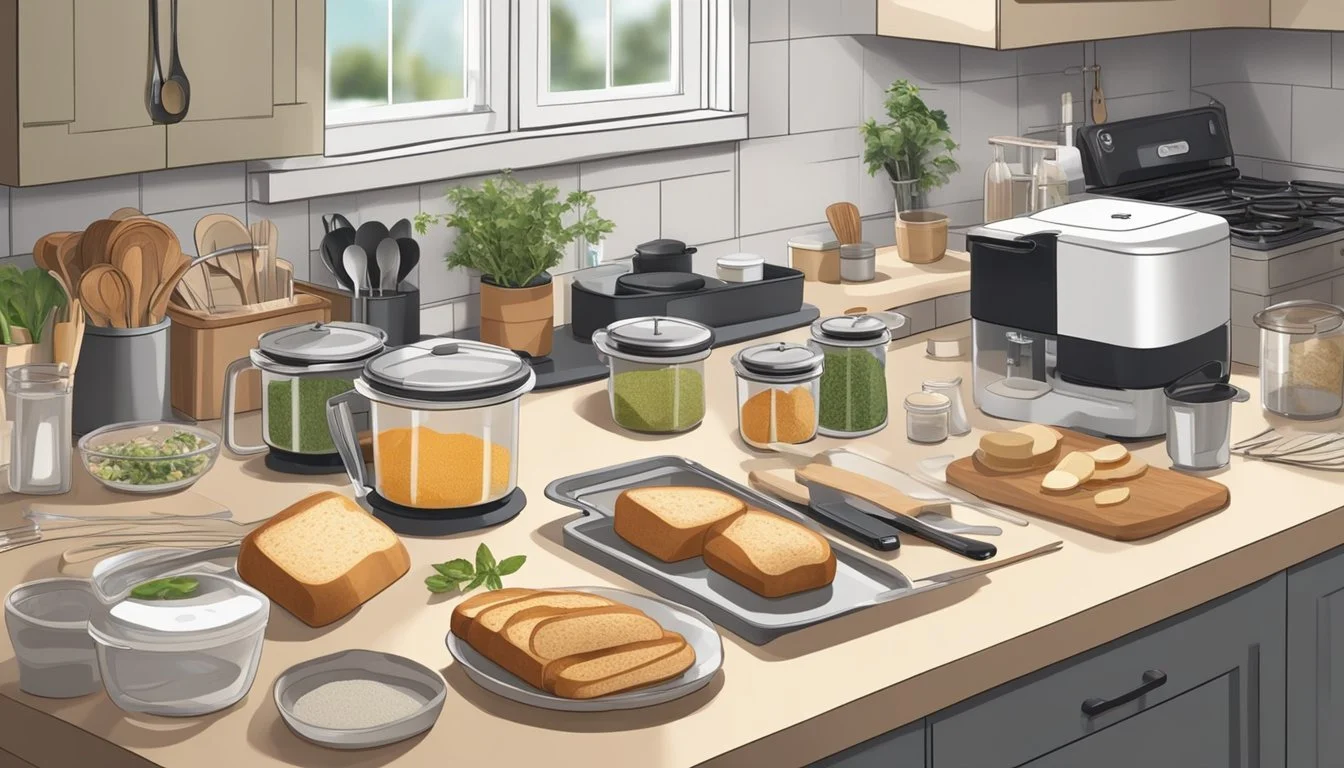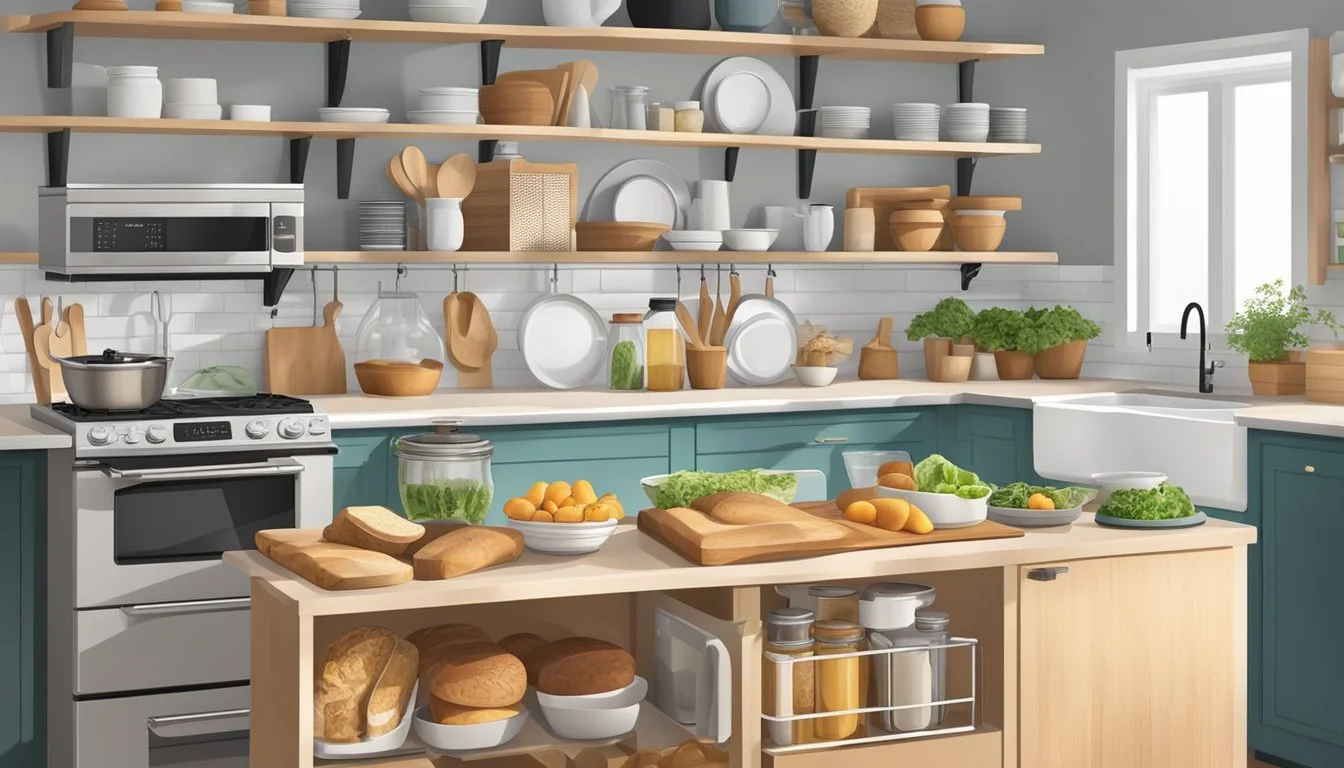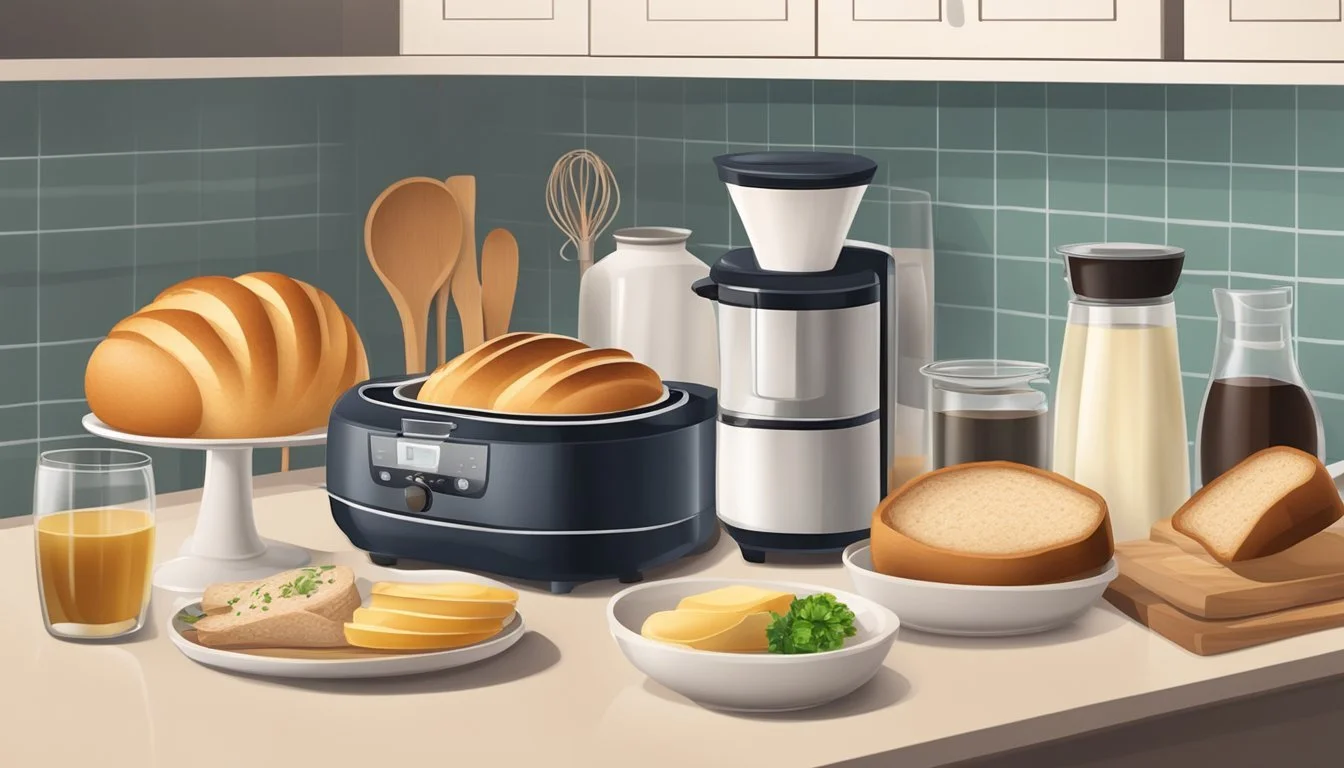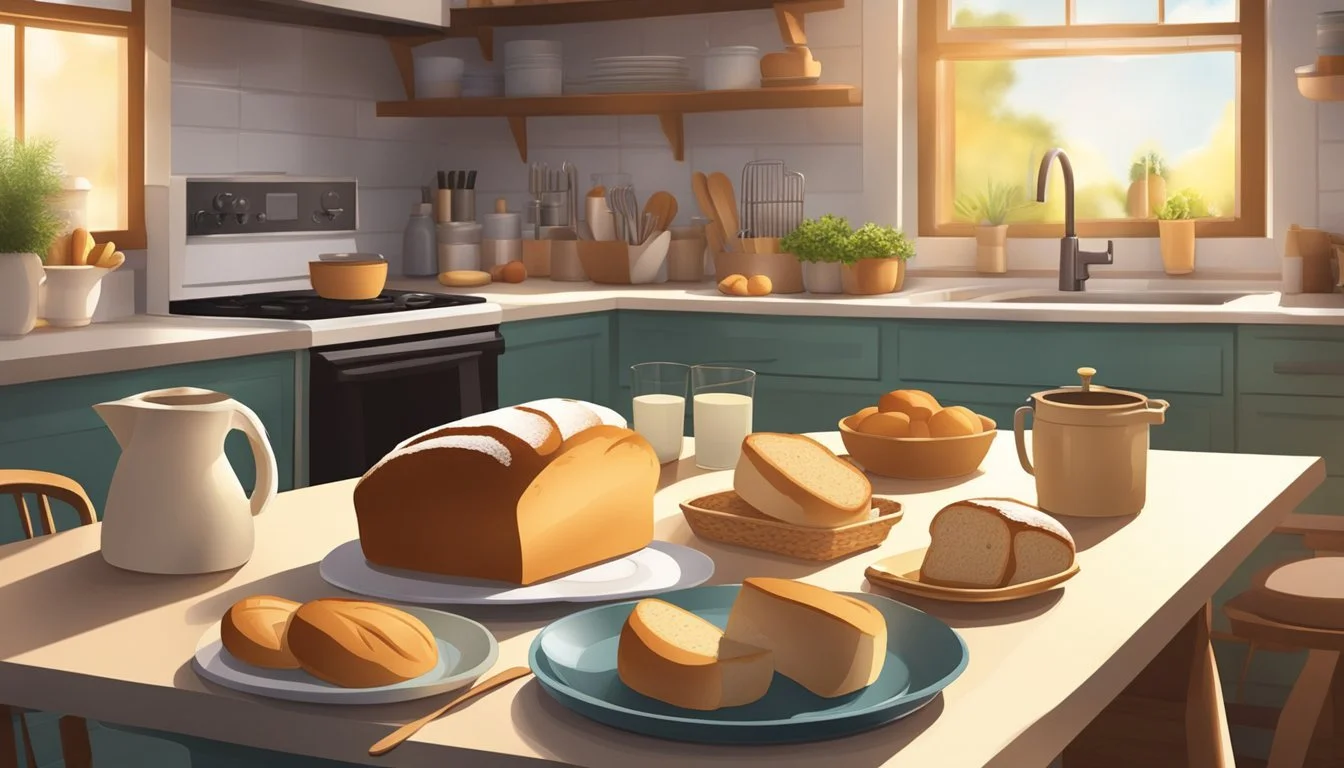5 Tips for Organizing Your Kitchen for a Dinner Party with a Bread Maker
Streamline Your Space for Effortless Entertaining
Organizing your kitchen for a dinner (What wine goes well with dinner?) party can set the stage for a memorable evening with friends and family. The kitchen, often considered the heart of the home, becomes a central hub during gatherings. Incorporating a bread maker into the event not only adds a comforting aroma and a fresh taste to the meal but also requires thoughtful preparation to ensure everything runs smoothly. Proper organization can minimize stress and allow the host to focus on the joy of entertaining.
Effective use of space, tools, and time are key elements to consider when organizing the kitchen. Separating drink stations from food areas can prevent congestion, allowing guests to move freely and socialize. Clearing countertops and gathering all necessary utensils prior to cooking can streamline the process, making it easier to manage the various components of the meal, including the timely creation of freshly baked bread.
For the modern host, it is also crucial to think ahead about storage for leftovers and the provision of containers for guests who may wish to take some of the meal home. By planning for these elements in advance, hosts can ensure that their kitchen remains an oasis of calm efficiency, even as the warmth and laughter of the evening's entertainment unfurl around them.
Understanding Kitchen Spaces and Flow
A well-organized kitchen streamlines the cooking process, especially when preparing for a dinner party with the use of appliances like a bread maker. Efficiently utilizing kitchen spaces and maintaining a logical flow can make a significant difference in functionality.
Assessing Your Kitchen Layout
The first step in effective kitchen organization is to take a close look at the existing layout. Identify the primary work zones which typically include areas for food preparation, cooking, and cleaning. Each zone should be equipped with the necessary tools and ingredients. For instance, near the bread maker, one might store flour, yeast, and bread pans to create a dedicated bread-making station.
Consider the location of the kitchen cabinets; frequently used items should be placed in lower cabinets for easy access, while less-used gadgets and seasonal tools can be stored in the higher, out-of-reach cabinets. Ensure there is a cohesive strategy to prevent clutter and maintain organization.
Optimizing Counter Space for Preparation
The countertop serves as the main work surface, especially important during food preparation stages. Keep the countertop near the bread maker clear of unnecessary items — this enables a cook to knead dough or manage baking supplies without spatial constraints.
Clearing the Countertop: Remove non-essential appliances and decorative items.
Using Vertical Space: Install shelving units or hanging racks above the counter.
Strategic Organization: Place cutting boards, mixing bowls, measuring tools, and other preparation essentials in an easily accessible location, close to where the meal prep happens.
By assessing the kitchen layout and optimizing counter space, cooks can achieve an organized kitchen that supports an efficient flow – especially significant when a dinner party is in the works and the bread maker is in constant use.
Maximizing Storage and Accessibility
Proper storage solutions and accessibility strategies are critical for hosting a successful dinner party, especially when incorporating a bread maker into the kitchen setup. By organizing kitchen drawers, cabinets, and utilizing vertical space effectively, one can ensure that every item has its place, reducing clutter and enhancing the cooking experience.
Best Practices for Drawer Organization
Kitchen drawers become a hub of utensils and small appliances, thus, implementing drawer dividers can foster an orderly environment. Utilizing dividers not only separates different types of instruments such as cutlery, spatulas, and measuring tools but also allows for quick access. This is particularly useful when needing to find accessories for the bread maker like measuring cups or dough hooks.
Utensils: Allocate separate compartments with dividers
Bread Maker Accessories: Dedicate a section for easier retrieval
Utilizing Cabinets and Shelves
Cabinet organization is key to a functional kitchen. Grouping similar items together—like baking ingredients near the bread maker—and using clear bins or lazy Susans helps maintain an orderly system within cabinets. For upper cabinetry, placing frequently used items at eye-level ensures they're within easy reach, while seasonal gadgets can be stored higher up.
Shelving Solutions:
Place everyday dishes on middle shelves
Store rarely used appliances on top shelves
Innovative Use of Vertical Space
Maximizing vertical space is often overlooked in kitchen organization. Open shelving can serve both aesthetic and functional roles, offering additional storage and easy access to items like bread baskets or recipe books. When utilizing wall space, consider mounted racks or hanging grids for storing pots and pans, freeing up cabinet space for other essentials.
Vertical Storage Ideas:
Wall-mounted racks: Ideal for pots, pans, and large utensils
Hanging grids: Can be used for frequently accessed utensils and tools
Efficient Food and Utensil Management
Managing kitchen essentials effectively ensures everything is at hand when preparing for a dinner party with a bread maker. Here are the ways to organize food and utensils to ensure efficiency during cooking.
Organizing Pots, Pans, and Cooking Utensils
Pots and Pans: Utilizing dividers in cabinets or drawers keeps pans and lids separated and accessible. Tension rods can create additional shelving, preventing the need to remove a stack just to access the bottom item.
Cooking Utensils: An utensil organizer in a drawer or a holder on the countertop allows for quick selection of needed items. Group utensils by their use; for instance, keep baking tools together separate from those used for stovetop cooking.
Smart Food Storage Solutions
Canisters and Glass Jars: Store dry goods like flour and sugar in canisters or glass jars for clear visibility. This not only keeps ingredients fresh but also lets you see how much is left at a glance.
Plastic Containers: Transparent food containers are ideal for refrigerated items. Ensuring containers are stackable maximizes storage space while maintaining order.
Labeling Systems for Efficiency
Labeling: Clearly label everything—from spices to food storage containers—to prevent confusion, streamline the cooking process, and facilitate quick access.
Silverware and Spices: Use labeling on dividers within drawers to sort silverware effectively. Small labelled jars work well for spices, which can be alphabetically organized to save time during meal prep.
By instituting these organization strategies, a host can maintain a kitchen that is both functional and inviting, paving the way for a successful dinner party.
Incorporating Appliances and Large Items
When organizing a kitchen for a dinner party, the correct placement of appliances and thoughtful storage solutions are crucial. They ensure that the space remains functional and streamlined during the event preparation.
Strategically Placing Your Bread Maker
The bread maker, as a focal appliance for a dinner party, should be strategically placed on the counter where it’s easily accessible yet not obstructive. Consider these factors:
Proximity to Ingredients: Place it near the area where bread ingredients are kept for efficiency.
Access to an Outlet: Ensure the bread maker is close to a power source to avoid extension cords across the kitchen.
Serving Point: If the bread maker has a "keep warm" function, position it near the serving area for guests to enjoy freshly made bread.
Storing Small Appliances and Baking Sheets
For small appliances and baking sheets, the goal is to keep them out of the way but within reach. Here's how one could achieve this:
Vertical Separators in Cabinets: Utilize vertical space by storing baking sheets upright using tension rods or organizers.
Appliance Cabinets: Designate cabinets specifically for small appliances, grouped by frequency of use, with the most frequently used items at the front.
Cord Management: Keep cords neatly coiled or use a cord organizer to prevent tangles and clutter.
Enhancing the Dinner Party Experience
A well-organized kitchen and thoughtfully planned service can transform a dinner party from mundane to memorable. The ambience and the flow of service are integral to this transformation.
Creating a Dinner Party-Friendly Environment
Establishing a buffet-style setting can significantly facilitate guest interaction and movement during the dinner party. The key to a successful buffet setup lies in maintaining a spacious area where guests can navigate with ease. Utilizing a variety of serving platters that complement the aesthetic of the kitchen decor not only adds to the visual appeal but also serves functional purposes. One should arrange platters and tableware so that they are easily accessible and logically ordered to guide guests through the choices available.
It is important to provide enough space between items to prevent crowding and to use tiered stands to create levels and make the most of the table space. An aspect that should not be overlooked is proper lighting, which plays a pivotal role in creating an inviting and pleasant environment.
Implementing a Seamless Service Flow
A seamless service flow is essential to ensure that guests are not waiting for prolonged periods and to make the dinner party run smoothly. Clear labeling of dishes is a small but crucial detail that can go a long way in facilitating this flow, especially if it involves self-service. It is important for hosts to have an understanding of the appropriate type of tableware for each dish, prioritizing functional design that enhances usability and the overall dining experience.
Furthermore, strategically positioning the bread maker in the kitchen where it's accessible yet not obstructive can add the delightful element of freshly baked bread to the dinner party, while also seamlessly keeping up with demand. The hosts should ensure a regular check on the bread maker to keep the supply consistent throughout the evening.
To assist in a smooth flow, they might consider:
Placement of utensils, napkins, and plates at the beginning of the buffet line.
Having a dedicated flatware station at the end of the line to prevent guests from juggling these items while serving themselves.
Designating someone to clear away used tableware and serving platters to maintain a clean and inviting buffet space.
Final Touches for a Cozy Atmosphere
Creating a cozy atmosphere involves carefully selecting decorative elements and adjusting lighting to enhance comfort. These touches transform the kitchen, setting the perfect mood for a dinner party.
Decorative Elements
Plants: Strategically placed greenery adds life and freshness to the kitchen. For a thematic touch, guests can appreciate fresh herbs in small pots, which double as both decor and practical ingredients for the dinner.
Cookbook Collection: A neatly arranged collection of cookbooks can serve as both a decorative feature and a conversation starter. Showcasing cookbooks with beautiful spines or covers adds a personal and inspiring touch.
Lighting and Comfort Details
Ambient Lighting: Soft, warm lights can make the kitchen feel welcoming. Dimmable overhead lights or a string of fairy lights provide gentle illumination without overwhelming guests.
Comfort Additions: Placing soft cushions on seating areas or a plush rug underfoot can significantly raise the comfort level, inviting guests to relax and feel at home.
Post-Dinner Party Kitchen Organization
After a dinner party, the host's attention turns to restoring order. Efficient clean-up strategies and resetting the kitchen are essential to conclude the event smoothly.
Easy Clean-Up Strategies
The host should begin by decluttering the dining area and kitchen surfaces. They need to collect all the dishes and utensils and sort them for washing. Using quality cleaning supplies is crucial for tackling tough stains on dishes and counter spaces. Here's a simple process:
Soak dishes with stubborn food residues in hot, soapy water.
Gather all used plastic bags and recyclables, separating them into waste, recycling, and compost.
Wipe down surfaces with a multi-surface cleaner, paying particular attention to areas where food preparation occurred.
Resetting Your Kitchen Post-Event
Resetting the kitchen involves a systematized approach to ensure that it is ready for regular use:
Restock: Replace any items used during the party back to their designated storage areas.
Organize: Assess and reorganize items that were moved or dislocated during the event.
Reflection: Take note of what worked well and what can be improved for future events.
Restocking and organizing will help maintain the kitchen's functionality and aesthetics for everyday life, ensuring a seamlessly transition back to normalcy post-celebration.
Additional Organizing Tips and Tricks
In the midst of prepping for a dinner party, kitchen organization can be a lifeline. Utilizing clear bins and creative DIY solutions helps in maximizing space and efficiency, particularly when incorporating a bread maker into the festivities.
Using Clear Bins and Wire Baskets
Clear bins are essential for fridge organization and keeping countertops free of clutter. By clearly labeling each bin, one can swiftly identify ingredients, which is crucial when the bread maker is running and time is of the essence. Similarly, wire baskets offer visibility and can be stacked to optimize vertical space.
Fridge organization: Use clear bins to segregate ingredients by type (e.g., dairy, produce).
Countertops: Reserve clear bins for ingredients necessary for the bread maker to limit the time looking for items.
Using lazy susans in cabinets or on countertops can make it easier to access frequently used items. A rolling cart can serve as a mobile station for the bread maker, complete with compartments for associated ingredients and tools.
Creative DIY Solutions for Extra Storage
Creative DIY storage solutions, like a pegboard, convert wall space into a dynamic storage area, ideal for hanging utensils or the bread maker’s accessories. Chalkboard surfaces on cabinet doors or pantry walls can double as a space for noting down measurements or baking times, keeping them in plain sight.
Pegboard: Outfit with hooks and shelves to hang measuring cups or display recipe books.
Chalkboard: Paint the inside of a pantry door or a section of the wall for quick note-taking.
For those struggling with a junk drawer, repurpose it into a space for storing bread baking tools, utilizing DIY dividers to keep everything in order. Hidden storage solutions, like false drawer fronts that turn into storage, make excellent hideaways for lesser-used items. Additionally, DIY shelving can be tailored to fit into unusual spaces and can house decorative bins or cookbooks.
Regular Maintenance and Updating Your Organization
Maintaining an organized kitchen ensures efficiency during dinner parties, especially when a bread maker is involved. Keeping both the everyday items and special equipment easily accessible saves time and reduces stress.
Scheduling Regular Decluttering Sessions
It's essential to set aside time bi-monthly to declutter the kitchen. During these sessions, one should evaluate necessities such as food storage containers and dry goods. Items that are no longer needed or have expired should be removed to optimize space. Organizing ideas that work well include using clear, labeled containers for dry goods and grouping items by type in the kitchen pantry.
Adapting Organization to Changing Needs
As needs evolve, the organization in the kitchen must also adapt. This might mean reorganizing fresh produce on floating shelves for better visibility or utilizing pull-out drawers for ease of access to key utensils. Enhancing the functionality of cabinets with a shelf riser or installing pull-out shelves can make finding and storing cookware simpler. Adapting can mean re-zoning the kitchen based on how frequently items are used, keeping the most-used items within arm’s reach.
Conclusion
Organizing a kitchen effectively for a dinner party can be a seamless task with the right strategies. Guests appreciate a host who displays a sense of order and readiness, and incorporating a bread maker adds a homemade touch that is sure to impress.
With the bread maker, one must plan their timing wisely, ensuring fresh bread is available just as guests arrive. The aroma alone is inviting, but it also confirms that the kitchen is the heart of the preparation.
Essentials for Organization:
Preparation: Measure ingredients for the bread maker in advance to avoid last-minute rushes.
Grouping: Keep related items, such as baking supplies or condiments, together.
Accessibility: Arrange silverware in bundles for easy grab-and-go at the buffet.
Flow: Separate the drinks from the food to prevent congestion.
Space Management: Utilize large trays and professional baking pans to maximize counter space.
Efficient kitchen organization leverages both the aesthetic and functional aspects of the space. It can elevate the entire dining experience, allowing the host to enjoy the event as much as their guests. By implementing these tips, one's dinner party is not only poised for success but will also reflect an undoubted level of kitchen mastery.









